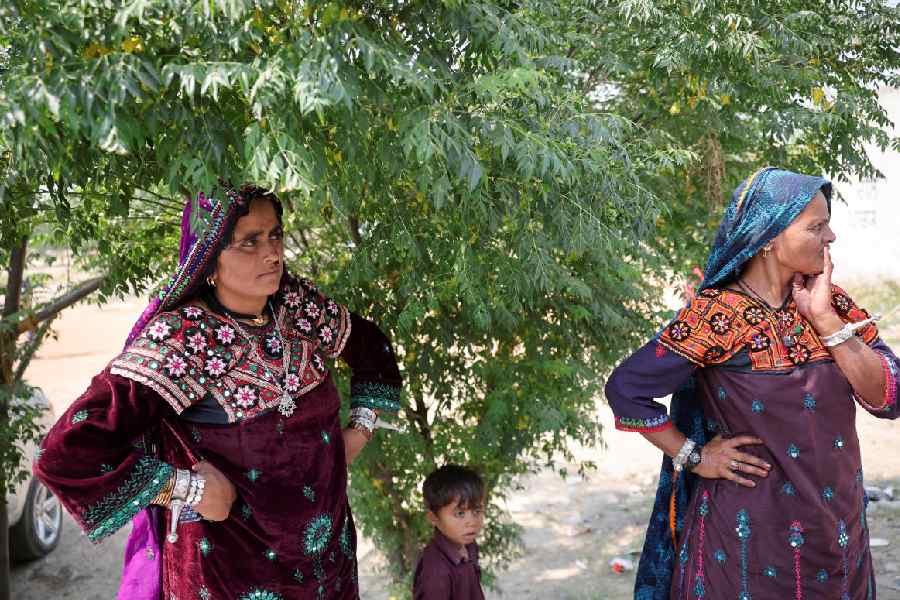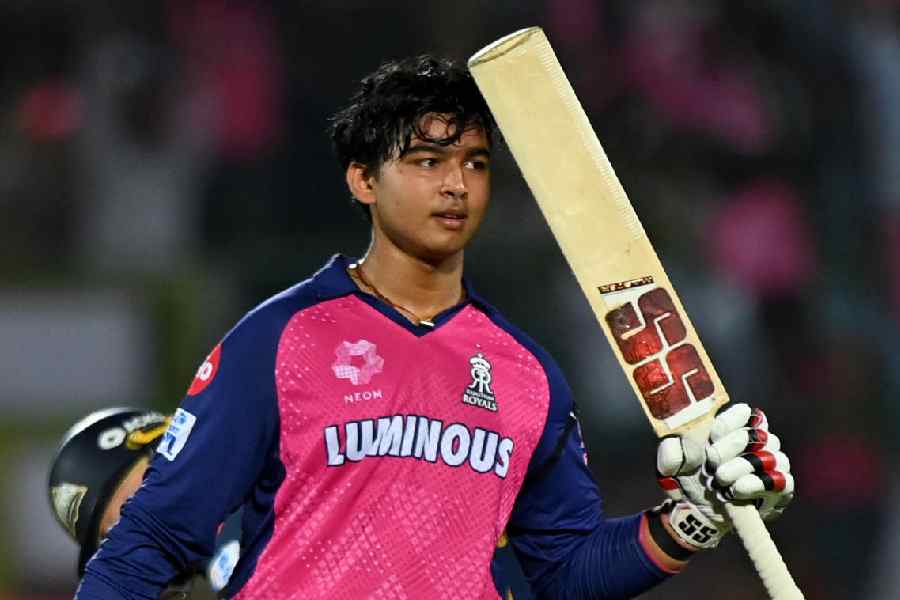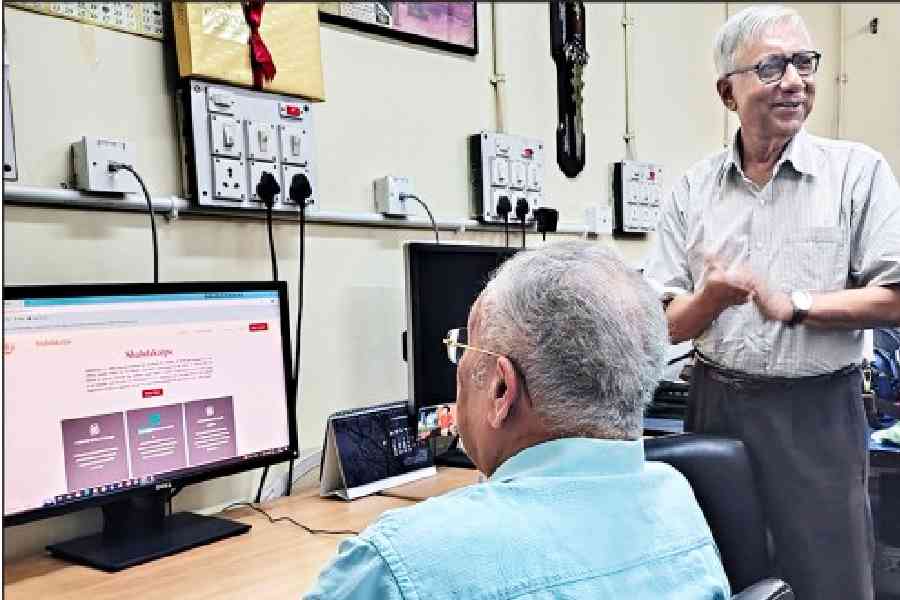That the curator of Galerie La Mere has been alternating the Aurobindo Institute of Culture’s spiritual concern in respect of art with pure aesthetic interest is a happy revelation. The recently held exhibition at the gallery was not confined to a given theme and so gave enough space to a variety of creative hands. Indeed, the list of exhibits projected a cross section of the technical concerns of the well-known artists of Calcutta. The works of Amal Chakladar, Amit Sarkar, Krishna Bandyopadhyay and Sukti Subhra Pradhan and Siddhartha Sengupta were of high standard, while Shakila’s collage once again proved her mettle in the given medium. Among the rest, the more impressive works were those by Amitabha Banerjee, Aditya Basak, Atin Basak, Hiron Mitra, Kishore Chatterjee, Nbaneeta Javed, Ramlal Dhar, Sanatan Dinda, Shyamal Dutta Roy, Sohini Dhar and Wasim Kapoor.
Samir Dasgupta
Dhaibat celebrated its 25th anniversary at Madhusudan Mancha on January 27 with select Rabindrasangeet numbers and readings from the poet’s prose and poetry. The central thread that ran through the selections was utsab — the celebration of life and death and the joyous amalgamation of the human spirit with nature and the Universe. Orey maajhi by Aditi Gupta Basu was a thoughtful and sensitive rendition, her control over range and the supple robustness of her tone adding to the suavity. Swati Basu, Sudeshna Ghosh, Rinkie Gangopadhyay and Saikat Sekhareswar Roy offered pleasant and tuneful music, though a more thoughtful selection of their respective scales would have enhanced the results. Subhashis Majumdar’s Udashini beshey was a potent piece of music. Sekhar Gupta’s technical proficiency in music direction was commendable.
Mohua Mitra
Salil Shankar, a disciple of Pandit Ravi Shankar, displayed good measure of his artistry in a classical evening hosted by Press Club Calcutta on January 31. Dedicated to the memory of violin maestro V.G. Jog who breathed his last that morning, Shankar chose raga Yaman Kalyan for the occasion. An overwhelming presence of delicately executed meends marked his alaap, underlining the introspective aura about the raga. He proceeded on with customary gats and other compositions. Although the winter chill and splattering of raindrops could not deter the handful of dedicated listeners, the excess of surrounding noise threatened to play a spoilsport.
Anshuman Bhowmick










